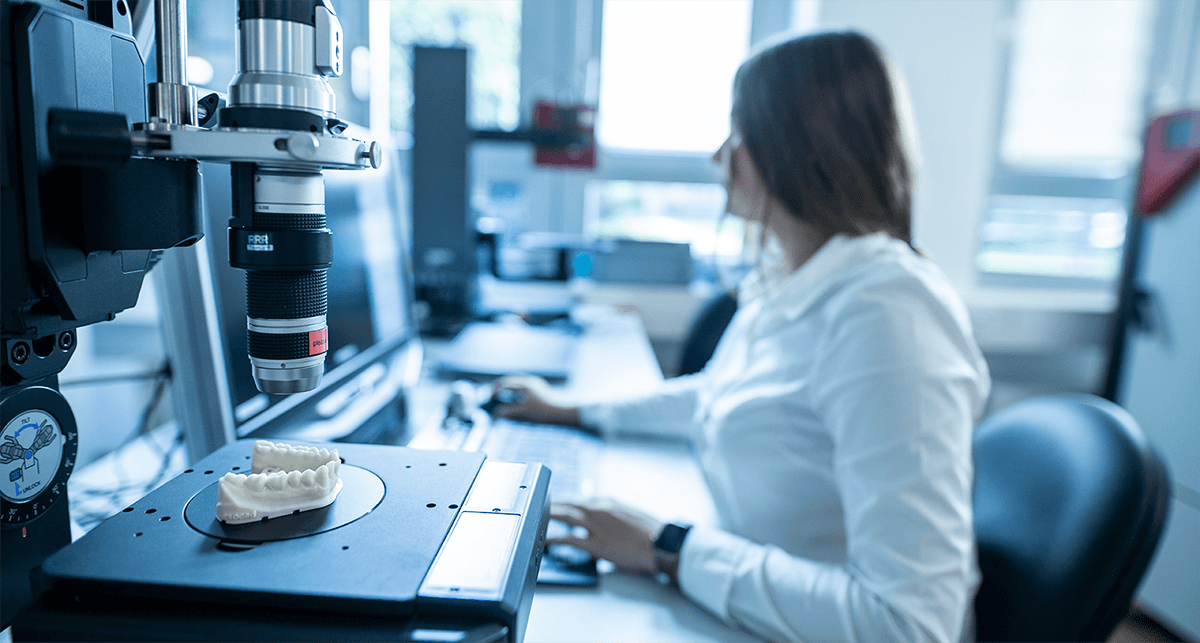
Accuracy Put to the Test – Evaluation Study of the Ultracur3D® DM 2505
Precise parts are essential in various industries, especially in the dental sector. Teeth are different from person to person, and an important feature for human interaction. So, to have to create, for example, a dental splint, for healthy teeth the model of the patients’ teeth must be as accurate as possible. More and more dentists replace the traditional impression method with an intraoral scanner that creates a 3D model of the patient’s dentition. Using a 3D printer, this model can then be printed. However, as stated before, the accuracy of the models has the highest priority, so the experts at Forward AM, in collaboration with the German dental lab Organical CAD/CAM GmbH have put the accuracy of our Ultracur3D® DM 2505 to the test!
Learn more about Ultracur3D® DM 2505
The Ultracur3D® DM 2505 is part of our resin Dental Line. This rigid resin is perfect for 3D modeling, especially molding for dental applications. It impresses with advantages such as precision manufacturing of dental models and is ideal for thermoforming, plus the parts can simply be washed with water – no chemicals needed.
Our Evaluation Study
Dental models are a vital mosaic piece within the dental industry to create applications like crowns and bridges, veneers, inlays/onlays/overlays, clear aligners, or individual impression trays. Using the traditional way, the dentist still uses impression trays to create a dental imprint of the patients’ teeth. However, that imprint is simply a negative picture of the set of teeth. Before an application can be completed, the negative imprint must be converted into a positive. The model is then often sent to a dental laboratory. Only then can the actual creation process of the application begin. So traditionally, creating a necessary dental application for the patient is a very manual and cumbersome process including many different steps and, even worse, can sometimes even be uncomfortable for the patient.
These are only a few reasons why Additive Manufacturing has been on the rise in the dental industry: many traditional steps can be skipped, and this technology offers great potential. When 3D printing is involved in the creation process of a dental application, there is no need for a dental imprint and the subsequent steps. With the help of an intraoral scanner, the dentist can create a 3D model of the patients’ teeth, which can then be printed with a 3D printer. Often, DLP (Digital Light Processing) printers are used to make a model out of a digital 3D file. Besides the previously stated benefits, the use of Additive Manufacturing has a positive impact on the cost-effectiveness of the entire process. In the end, it’s the practice that counts in the industry, and we at Forward AM know that, so we conducted an evaluation study with the dental lab.
Our evaluation study aims to show that Forward AM’sUltracur3D® DM 2505 can be used on any common DLP printer to create highly accurate dental models. To prove that we collaborated with Organical CAD/CAM GmbH, who used their Organical® 3D Print X1S to create a model with validated process parameters.
Want to know all about the study? Find the complete version here.
Do you want to learn more about how Additive Manufacturing can innovate the dental industry? Then do not hesitate to contact our Forward AM team with your questions!
Share this page
Other Blog Posts
Forward AM and the UltiMaker Factor 4 – Delivering Industrial-grade Performance
Forward AM offers a wide range of high-performance and certified materials that open a huge range of new 3D printing applications…
LAYERbyLAYER: A Conversation with Jörg Gerken of rpm rapid product manufacturing
Welcome to LAYERbyLAYER: Interviews with 3D Printing Services, a unique series brought to you by BASF Forward AM.
LAYERbyLAYER: A Conversation with Janet Dickinson of Endeavor 3D
Welcome to LAYERbyLAYER: Interviews with 3D Printing Services, a unique series brought to you by BASF Forward AM.


